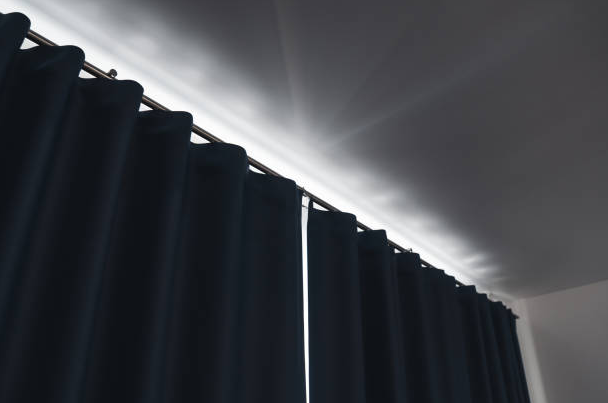The Science of Sleep
For many, a good night’s sleep is the ultimate luxury. In a world constantly aglow with screens and city lights, the natural rhythm of our sleep-wake cycle can often be disrupted. At the heart of this disruption is the exposure to artificial light and its effects on our circadian rhythm.
In the following article, we’re going to go over how blockout curtains can make a positive difference to your sleep cycle.
Circadian Rhythms Explained
Our bodies operate on an internal clock known as the circadian rhythm. This rhythm is regulated by a variety of factors, with light exposure being one of the most influential. As daylight fades and darkness settles, our brain releases melatonin, a hormone that makes us feel sleepy. Conversely, when the sun rises and light permeates our environment, cortisol, a wakefulness hormone, is released.
Artificial Light and Sleep Disruption
While the natural ebb and flow of daylight and darkness were the norm for millennia, the advent of artificial lighting changed the game. Now, we can have bright lights at any hour, confusing our internal clocks. Late-night screen time, city lights streaming through windows, or even just a bedside lamp can hinder melatonin production, leading to disrupted sleep.
The Role of Curtains in Sleep Hygiene
While many factors contribute to good sleep hygiene, room darkness is paramount. This is where premium blockout fabric curtains come into play. By effectively blocking external light, these curtains create a sleep-conducive environment, allowing our circadian rhythm to function optimally.
For those living in urban areas or simply seeking an effective solution to light-related sleep disruptions, these curtains are a godsend. Beyond just blocking out light, they also offer thermal insulation, keeping rooms cool in summer and warm in winter, further enhancing sleep quality.
Environmental Benefits of Blockout Curtains
Beyond the personal benefits, blockout curtains also have an environmental angle. By offering thermal insulation, they reduce the need for heating or air conditioning, leading to lower energy consumption. This dual role of enhancing sleep and conserving energy makes them a valuable addition to modern homes.
The Future of Sleep Technology
As we understand more about sleep and its impact on our health, technology and home solutions are evolving. From smart beds that adjust firmness to sleep trackers that analyse our sleep patterns, the future holds promise. In this realm, the potential of fabrics that block out light, yet remain breathable and stylish, like blockout curtains, cannot be underestimated.
Impact on Mental Well-being
Beyond the physiological benefits of improved sleep, there’s a significant mental aspect to consider. Our modern lifestyles, filled with stressors and constant stimulation, make relaxation and restful sleep elusive. The role of blockout fabric curtains extends to creating a sanctuary of calm in our bedrooms. This sanctuary, devoid of the intrusive glares of streetlights or early morning sun, becomes a haven for the mind. It allows for a mental detachment from the hustle and bustle of the outside world. By fostering an environment of darkness, these curtains indirectly promote mental relaxation, helping to alleviate symptoms of anxiety and stress that often arise from sleep deprivation.
Conclusion
In a world where sleep is often compromised, understanding and leveraging the tools at our disposal is crucial. Blockout fabric curtains are more than just a stylish home accessory; they are an investment in our health, wellbeing, and the environment. By embracing such solutions, we take a step towards a brighter, well-rested future, where technology and nature work in harmony. For those keen to delve deeper into the world of sleep, a wealth of knowledge awaits on the topic of circadian rhythm science.
